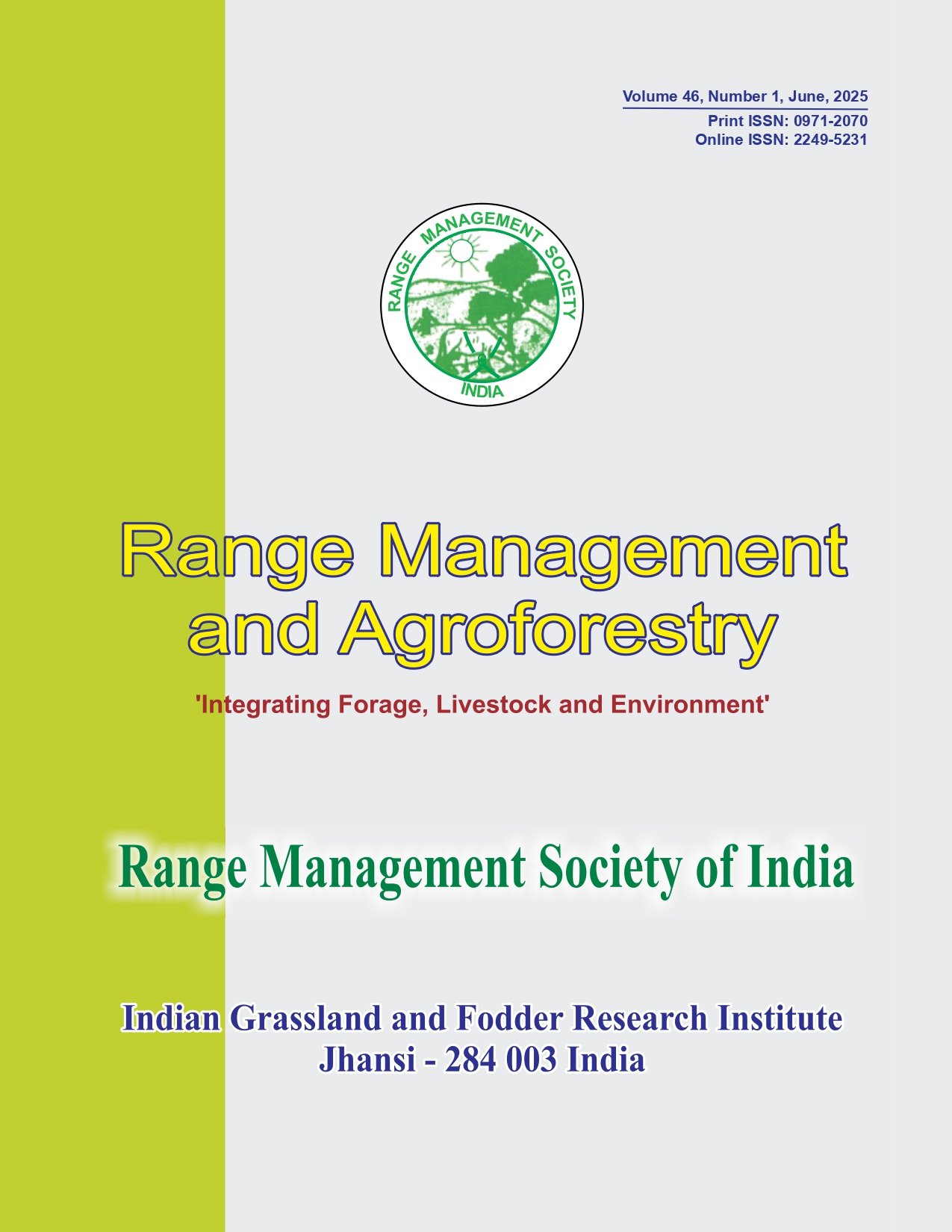Nutritional quality evaluation of maize byproducts for green fodder and silage potential
Keywords:
Baby corn, Fodder, In-vitro, Quality evaluation, Silage, Sweet cornAbstract
Study assessed nutritive value (fresh and ensiled samples) and silage quality of various maize byproducts: baby corn husk, whole plant post baby corn picking, whole plant post sweet corn harvesting, whole plant with cobs at silage stage, and whole plant post mature cob harvesting. All the samples/genotypes/hybrids were significantly (p <0.01) different for dry matter (DM), ether extract (EE) and crude protein (CP) at the fodder stage. The highest DM (33.6%) was observed in whole plant, including the grain sample and the least in baby corn husk (14.66%). Similarly, the least CP (3.25%) was observed in the whole plant after harvesting the mature cob, and the highest was in the sweet corn plant (9.36%). The silage pH of samples was in the range of 3.3-4. Baby corn husk as green fodder and silage maintained good quality (DM, CP, NDF, ADF and ash contents), while others followed quality sequence IQPMH 18-2>IBCH 1>Sugar 75> LQPMH 1. This study revealed the potential of utilizing various maize crop byproducts as silage.
Downloads
Downloads
Published
How to Cite
Issue
Section
License

This work is licensed under a Creative Commons Attribution-ShareAlike 4.0 International License.



